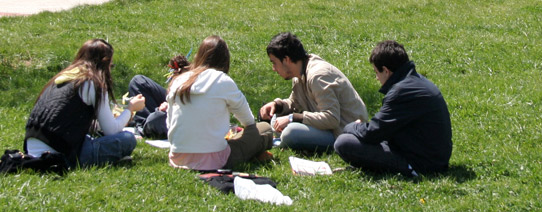|
|
 |

Learn Spanish Abroad - Travel Information about Colombia
If you want to travel to Colombia, there are some things you should know:
Visa
A Tourist Visa is granted for most western countries. You can get a visas for 30, 60 and 90 days, although you may have to explain the purpose of your stay if you require a 90 day visa. As a Tourist you can visit Colombia a maximum of 6 months per year. In other words you can make 3 trips and stay 60 days each trip during any given year. All visitors to Colombia receive an entry stamp upon arrival at the airport. You are entitled to a 30 day visa extension and the whole time of your stay in Colombia with a tourist visa is limited to six months per year. To extend your visa at the Departamento Administrativo de Seguridad (DAS) office in Medellin you must be prepared to present a valid passport including visa (stamp of entry), four photographs, your onward ticket and a copy (if you don't have one, say you have an e-ticket) and two copies of both the ID page and the entry stamp of your passport. A fee will be assessed at DAS
|
Safety
Colombia definitely isn't the safest of countries, and you should be careful at all times. In fact, it was only a few years ago that Colombia was regarded as the 'world's most dangerous country' and the 'kidnapping capital of the world.' The situation has vastly improved over recent years but there are still inherent dangers. Whatever you do, don't let the rumors and urban legends scare you off. Within a day of arriving in Colombia you'll feel your confidence in the security situation quickly growing.
Electricity
Electricity in Colombia is 110 Volts, alternating at 60 cycles per second. If you travel to Colombia with a device that does not accept 110 Volts at 60 Hertz, you will need a voltage converter. There are three main types of voltage converter. Resistor-network converters will usually be advertised as supporting something like 50-1600 Watts. They are light-weight and support high-wattage electrical appliances like hair dryers and irons. However, they can only be used for short periods of time and are not ideal for digital devices.
|
When to go?
In the Andean Region, the dry season falls between December and March and July and August. Christmas is a particularly festive time in Colombia, though prices often rise and hotel rooms fill up quickly in Cartagena and the Atlantic Coast, as well as in other popular tourist destinations. During the Christmas holiday, Easter, and summer vacation, you'll have to book hotels in advance and be prepared to pay a bit extra. If possible, avoid Colombia in October and November, as these are the rainiest months, and flooding and poor road conditions are common.
|
Money and costs.
Colombia is a reasonably cheap country to travel in, provided you are traveling overland. Backpackers should be prepared to shell out US$15 to US$25 per day on average. If you want a more comfy trip, with midrange hotels, some better restaurants and a flight from time to time, you'll average somewhere between US$25 and US$45 daily. Some resort areas, especially along the Caribbean coast, have all-inclusive resort packages that cost US$100 to US$150 for two people, a good value anywhere. You can save money by going to free days at museums (often the last Sunday of the month), or using a student card when buying plane and museum tickets. Also remember that bus ticket fares are always negotiable. A little haggling can usually knock off around 20% to 30% of the cost, though you may need to shop around at the various bus company windows.
Credit and debit cards are the safest and easiest way to access money in Colombia. Traveler's checks (Amex are by far the easiest to change) are safer than cash, though some US dollar bills may be useful.
Large amounts of counterfeit US dollars 'made in Cali' circulate on the market. According to rough estimates, about a quarter of all fake US dollars, virtually indistinguishable from the genuine article, circulating worldwide are printed in Colombia.
Generally, Bancolombia and the Banco Unión Colombiano are the banks to visit if you need to change money or do any over-the-counter transactions. However, you will find half-a-dozen other banks in most medium-sized towns that have ATMs.
|
Health and safety
If you require a particular medication take an adequate supply with you; it may not be available locally. Take the original prescription specifying the generic rather than the brand name; this makes getting replacements easier. It's also wise to have the prescription with you to prove you're using the medication legally. you can register online with the International Association for Medical Assistance to Travelers (IAMAT; www.iamat.org).
Insurance
Buying a travel insurance policy to cover medical problems is recommended. There is a wide variety of policies and your travel agent will have recommendations.
Drugs
Colombian pharmacies stock all kinds of drugs, and medication can be cheaper than in Western countries. There are few restricted drugs; almost everything is sold over the counter. Many drugs are manufactured locally under foreign license. Be sure to check expiry dates.
Immunizations
Yellow fever vaccine is required for visitors to the national parks along the Atlantic coast. No other vaccines are legally mandated, but the following are strongly recommended.
|
Go back to Learn Spanish in Colombia
|
 |
|

